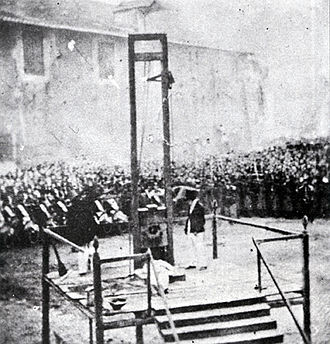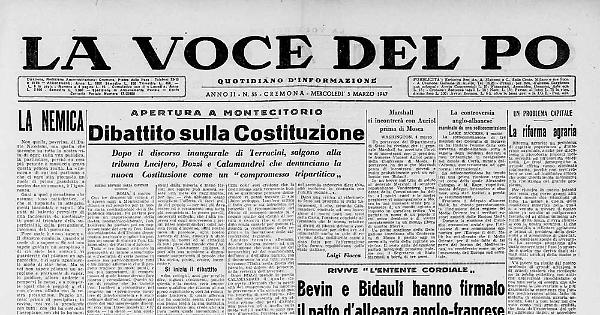Although the death penalty is still in force today in many countries around the world (including 21 states in the USA), it remains a sensitive and much-debated topic in Italy. Before the unification in 1861, Italy was divided into numerous states, each with its laws and, consequently, different positions on capital punishment.
Today, as we celebrate 30 years since its definitive abolition, we ask how we reached this turning point? What is the death penalty’s history in Italy, and what steps led to its eradication?
The death penalty in Italy before Unification
Looking back at history, we discover that the death penalty was already well-known by the Romans, becoming a central aspect of ancient Roman law. However, when we consider the positions of various rulers, from emperors to tsars, it’s clear that there was no uniform thinking on this issue. This was particularly true in Italy, which has always been under a delicate balance of political and territorial stability.
Italy’s history is extremely delicate and fragmented. As early as the 15th century, the concept of a “state” began to emerge, and over the centuries, the territory became increasingly divided politically and territorially. From the post-Napoleonic restoration to the unification of Italy, each of the 14 states had its laws regarding the death penalty:
- Kingdom of Sardinia
- Principality of Monaco
- Kingdom of Lombardy-Venetia
- Duchy of Parma and Piacenza
- Duchy of Modena and Reggio
- Duchy of Massa and Carrara
- Duchy of Lucca
- Grand Duchy of Tuscany
- Republic of San Marino
- Republic of Cospaia
- Papal States
- Kingdom of Naples
- Kingdom of Sicily
- Kingdom of the Two Sicilies
The political stance of the various states
The Grand Duchy of Tuscany was the first state in Europe to abolish the death penalty, although it temporarily reinstated it due to political and civil unrest. The Leopoldine law definitively abolished capital punishment on November 30, 1786, but it was reintroduced in 1790 to punish those who incited public uprisings. Later, Ferdinand III extended its application to include religious insults and premeditated murders. When the Lorraine dynasty returned to power, the death penalty was abolished again, this time permanently.

San Marino, which still exists today, carried out its last official death sentence in 1468. However, since formal abolition didn’t occur until 1865, the title of the first state to eliminate the death penalty belongs to the Grand Duchy of Tuscany, which did so almost a century earlier.
In the rest of the Italian states, the situation varied significantly. The Kingdom of Lombardy-Venetia, for example, maintained the death penalty until 1866, while the Kingdom of Sicily was probably the state that used it the most. Here, as in all territories under Aragonese rule, the Spanish Inquisition was active, persecuting heresy. Although the Inquisition didn’t directly impose the death penalty, heretics were often handed over to state authorities, who carried out executions. These were usually by burning at the stake, but those who confessed their crimes could receive a more merciful death, being strangled before being burned.
The situation was different in the Papal States, where the last official execution took place in 1870. With the transformation of the Papal States into Vatican City, the death penalty was definitively abolished in 2001 by order of Pope John Paul II.

The death penalty in Italy after Unification
When King Victor Emmanuel II proclaimed the Kingdom of Italy (1861), unifying the various territories under a single crown, the death penalty was still in force in all states except the Grand Duchy of Tuscany.
The death penalty was abolished from the penal code in 1889, thanks to an almost unanimous decision by both chambers of Parliament, even though it had effectively not been applied since 1877, following an amnesty by Umberto I of Savoy. This marked the first major step for the new Italy toward abolishing capital punishment, although it remained valid in military and colonial penal codes.
The abolition process was interrupted during the regime of Benito Mussolini, who reintroduced the death penalty in 1926. The law provided for the death penalty for those who attempted to harm the life or liberty of the head of government (and his family) or committed crimes against the state.

The penalty remained in force until 1948, and during the fascist regime and World War II, more than 200 official executions were recorded, not counting the numerous summary executions for which we have no precise data. (Italy between 1922-1945 – The Rule of Mussolini)
After World War II, the death penalty was maintained only for crimes related to fascism, until its final abolition on April 15, 1948. With legislative decrees on January 22, 1948, no. 21 and no. 22, the Italian Constitution, which came into force on January 1, 1948, eliminated the death penalty for all common and military crimes committed in peacetime.
However, the death penalty remained in the Military Penal Code of War until 1994, when Law No. 589 of October 5, 1994, definitively abolished it, replacing it with life imprisonment, making Italy the 54th country to abolish it for good.

The last official execution in Italy
At 5 a.m. on March 5, 1947, the last execution in Italian history was carried out. The condemned were three members of the armed forces: Aurelio Gallo, Emilio Battisti, and Aldo Morelli, sentenced for collaborationism and torture. According to the reconstruction of events, the first shot by the firing squad killed only Aldo Morelli, while the others were left wounded. At that point, Aurelio Gallo heroically said: “You shouldn’t shoot again, but do as you wish.”
Also, if you want to learn more about Italy’s history:
